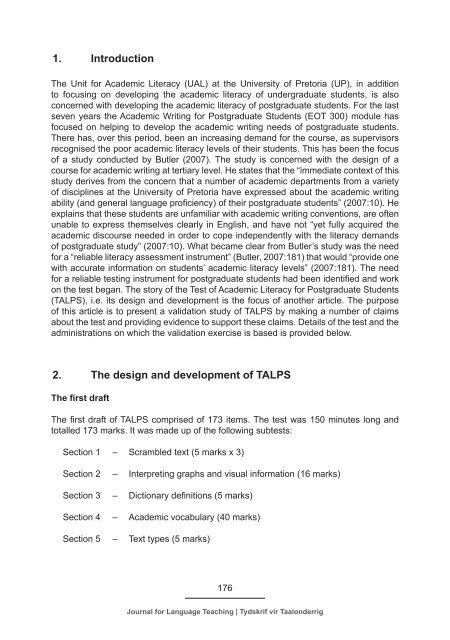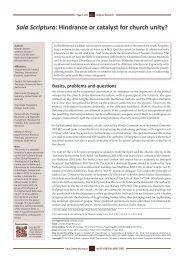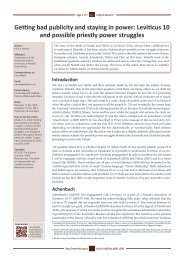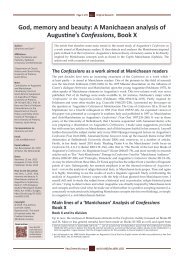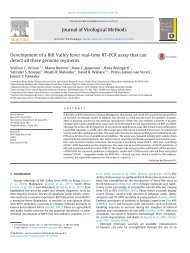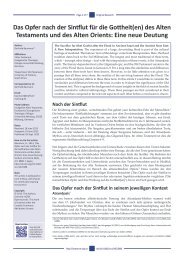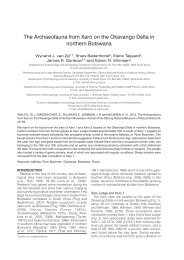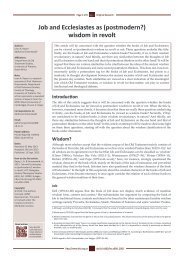View/Open - University of Pretoria
View/Open - University of Pretoria
View/Open - University of Pretoria
Create successful ePaper yourself
Turn your PDF publications into a flip-book with our unique Google optimized e-Paper software.
1. Introduction<br />
The Unit for Academic Literacy (UAL) at the <strong>University</strong> <strong>of</strong> <strong>Pretoria</strong> (UP), in addition<br />
to focusing on developing the academic literacy <strong>of</strong> undergraduate students, is also<br />
concerned with developing the academic literacy <strong>of</strong> postgraduate students. For the last<br />
seven years the Academic Writing for Postgraduate Students (EOT 300) module has<br />
focused on helping to develop the academic writing needs <strong>of</strong> postgraduate students.<br />
There has, over this period, been an increasing demand for the course, as supervisors<br />
recognised the poor academic literacy levels <strong>of</strong> their students. This has been the focus<br />
<strong>of</strong> a study conducted by Butler (2007). The study is concerned with the design <strong>of</strong> a<br />
course for academic writing at tertiary level. He states that the “immediate context <strong>of</strong> this<br />
study derives from the concern that a number <strong>of</strong> academic departments from a variety<br />
<strong>of</strong> disciplines at the <strong>University</strong> <strong>of</strong> <strong>Pretoria</strong> have expressed about the academic writing<br />
ability (and general language pr<strong>of</strong>iciency) <strong>of</strong> their postgraduate students” (2007:10). He<br />
explains that these students are unfamiliar with academic writing conventions, are <strong>of</strong>ten<br />
unable to express themselves clearly in English, and have not “yet fully acquired the<br />
academic discourse needed in order to cope independently with the literacy demands<br />
<strong>of</strong> postgraduate study” (2007:10). What became clear from Butler’s study was the need<br />
for a “reliable literacy assessment instrument” (Butler, 2007:181) that would “provide one<br />
with accurate information on students’ academic literacy levels” (2007:181). The need<br />
for a reliable testing instrument for postgraduate students had been identified and work<br />
on the test began. The story <strong>of</strong> the Test <strong>of</strong> Academic Literacy for Postgraduate Students<br />
(TALPS), i.e. its design and development is the focus <strong>of</strong> another article. The purpose<br />
<strong>of</strong> this article is to present a validation study <strong>of</strong> TALPS by making a number <strong>of</strong> claims<br />
about the test and providing evidence to support these claims. Details <strong>of</strong> the test and the<br />
administrations on which the validation exercise is based is provided below.<br />
2. The design and development <strong>of</strong> TALPS<br />
The first draft<br />
The first draft <strong>of</strong> TALPS comprised <strong>of</strong> 173 items. The test was 150 minutes long and<br />
totalled 173 marks. It was made up <strong>of</strong> the following subtests:<br />
Section 1 – Scrambled text (5 marks x 3)<br />
Section 2 – Interpreting graphs and visual information (16 marks)<br />
Section 3 – Dictionary definitions (5 marks)<br />
Section 4 – Academic vocabulary (40 marks)<br />
Section 5 – Text types (5 marks)<br />
176<br />
Journal for Language Teaching | Tydskrif vir Taalonderrig


